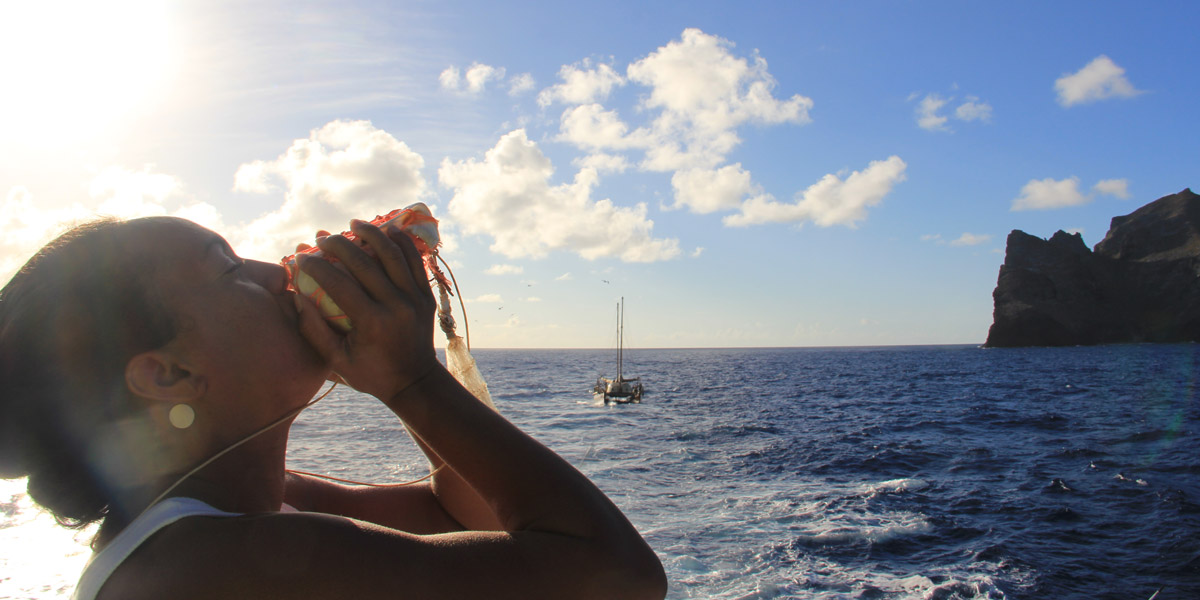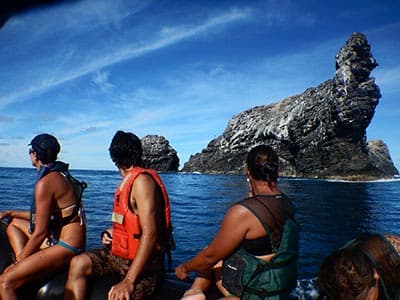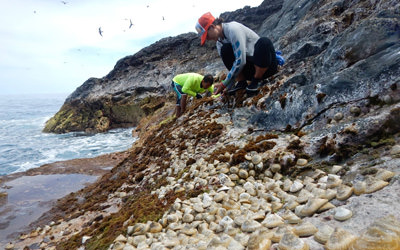Cultural Heritage
Cultural Access for Native Hawaiian Practices

Today, Native Hawaiians remain deeply connected to the Northwestern Hawaiian Islands on genealogical, cultural, and spiritual levels. Kaua‘i and Ni‘ihau families voyaged to these islands indicating that they played a role in a larger network for subsistence practices into the 20th century (Tava and Keale 1989; Maly 2003). In recent years, Native Hawaiian cultural practitioners voyaged to the Northwestern Hawaiian Islands to honor their ancestors and perpetuate traditional practices. In 1997, Hui Mālama i Nā Kūpuna o Hawai‘i Nei repatriated sets of human remains to Nihoa and Mokumanana that were collected by archaeologists in the 1924-25 Bishop Museum Tanager Expeditions (Ayau and Tengan 2002). In 2003, a cultural protocol group, Nā Kupuʻeu Paemoku, traveled to Nihoa on the voyaging canoe Hōkūle‘a to conduct traditional ceremonies. In 2004, Hōkūle‘a sailed over 1,200 miles to the most distant end of the island chain to visit Hōlanikū (Mokupāpapa, Kure Atoll) as part of a statewide educational initiative called “Navigating Change.” In 2005, Nā Kupu‘eu Paemoku sailed to Mokumanamana to conduct protocol ceremonies on the longest day of the year, June 21, the summer solstice.
Protecting Native Hawaiian Practices within Monument Management

The Proclamation, signed by President Bush on June 15, 2006, that designated the Northwestern Hawaiian Islands as a Marine National Monument states that "a person may conduct an activity regulated by this proclamation if such activity is specifically authorized by a permit," and in section D of the findings, permissible activities include those that "support or advance the perpetuation of traditional knowledge and ancestral connections of Native Hawaiians to the Northwestern Hawaiian Islands." The original Reserve goals and objectives, as well as those of the, now, Monument also reinforce this position.
While subsistence, and more broadly Native Hawaiian practices, are recognized and protected in the Hawaiian Islands (Constitution of the State of Hawaii; PASH 1995), definitions differ in various marine managed areas (KIRK 2004; Constitution of the State of Hawaii). The Monument definition of Native Hawaiian practices and subsistence use is based on a review of existing definitions, the goals and objectives of the Monument and the July 2004 recommendations from the Reserve Advisory Council, which provided official comment when the region was considered the Northwestern Hawaiian Islands Coral Reef Ecosystem Reserve.
The Native Hawaiian Practices and Subsistence within the Monument
Native Hawaiian Practices means cultural activities conducted for the purposes of perpetuating traditional knowledge, caring for and protecting the environment, and strengthening cultural and spiritual connections to the Northwestern Hawaiian Islands that have demonstrable benefits to the Native Hawaiian community. This may include, but is not limited to, the non-commercial use of Monument resources for direct personal consumption while in the Monument.

5 Criteria for Native Hawaiian Practices Permit:
- The activity is non-commercial and will not involve the sale of any organism or material collected;
- The purpose and intent of the activity are appropriate and deemed necessary by traditional standards in the Native Hawaiian culture (pono), and demonstrate an understanding of, and background in, the traditional practice, and its associated values and protocols;
- The activity benefits the resources of the Northwestern Hawaiian Islands and the Native Hawaiian community;
- The activity supports or advances the perpetuation of traditional knowledge and ancestral connections of Native Hawaiians to the Northwestern Hawaiian Islands; and
- Any Monument resource harvested from the Monument will be consumed in the Monument.



